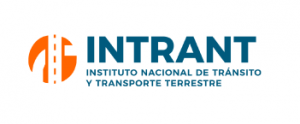
After the successful experience of reverting several two-way streets in the Naco neighborhood, the authorities at the National District city government and the National Institute of Transit and Transport (Intrant) are seeking final clearance for more road direction changes in the capital city.
The rationale is that people spend too much in fuel and time in traffic jams. Alexandra Cedeño, speaking for Intrant during a Zoom public hearing, said the street direction changes are expected to reduce congestion by 38% as the city takes steps to be more pedestrian and cyclist-friendly. The changes come after the drafting of the Urban Mobility Plan of Greater Santo Domingo (PMUS, 2019).
Cedeño stressed city streets in the Expanded Central Polygon area of Santo Domingo are “saturated.” She says the area has little public transport, and most people rely on their private vehicles to get around. Some 100 private schools in the area add to the congestion on school days.
There are 58 roads in the area. An in-depth study has recommended changes that would alleviate traffic jams. Among the road changes would be:
Lope de Vega – one way south to north
Tiradentes – one way north to south
Andrés Julio Aybar – one way east to west
Charles Sumner – one way west to east
Gustavo Mejía Ricart (Av. Gregorio Luperón to Calle Tapia Brea) west-east
Max Henríquez Ureña (Winston Churchill to Calle Proyecto) east-west
José Brea Peña (Max Henríquez Ureña to Winston Churchill) west-east
Cedeño says it could be another two months before the changes are in effect. She explained they would be implemented gradually. First the proposals need to be approved by the city councilors, next the signage needs to go up, people will be alerted to the changes, and only then will punitive actions will go into effect.
On average, 70% of Santo Domingo’s population leaves home daily and spends 1:15 minutes to get to where they are going on average. According to the research for the plan, people said they usually spend another 15 minutes looking for where to park. Of National District residents, 42% use a private vehicle, 36% use public transport and 21% are on foot. The peak hours are 6/10am, 4/7pm. There is an estimated 220 vehicles per 1,000 inhabitants in the National District. Around 19,000 bus units serve the city.
Read more in Spanish:
National District Government
15 July 2020

